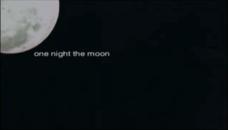AustLit
The material on this page is available to AustLit subscribers. If you are a subscriber or are from a subscribing organisation, please log in to gain full access. To explore options for subscribing to this unique teaching, research, and publishing resource for Australian culture and storytelling, please contact us or find out more.
Latest Issues
AbstractHistoryArchive Description
A young girl goes missing within the Australian landscape and her father refuses to let an Aboriginal man, Albert, be included in the search party and utilise his 'tracking' skills. It is a decision that proves fatal. Months later, the child's mother approaches Albert to begin the tracking process that eventually leads her to her lost child.
Notes
-
The idea for this screenplay was prompted by a documentary that screened on SBS called Blacktracker (Michael Riley, 1997).
Publication Details of Only Known VersionEarliest 2 Known Versions of
Works about this Work
-
One Night the Moon (Rachel Perkins, 2001)
2014
single work
review
— Appears in: Senses of Cinema , March no. 70 2014;
— Review of One Night the Moon 2001 single work film/TV -
Respecting Protocols for Representing Aboriginal Cultures
2014
single work
criticism
— Appears in: JASAL , vol. 14 no. 3 2014; 'This essay undertakes a detailed discussion of how respecting protocols for representing Indigenous cultures supports the interests of Indigenous communities and producers of stories with Indigenous content. To highlight the importance of Indigenous protocols I review the prominence and reception of Aboriginal stories in Australian film and literature and discuss how protocol guidelines can prevent problematic representations. I demonstrate how protocols influenced writing Calypso Summer (2014), a novel exploring issues relating to my cultural group, the Nukunu, to illustrate the challenges encountered and benefits gained from employing Indigenous representation protocols. ' (Author's introduction) -
Seriously Funny : History and Humour in The Sapphires and Other Indigenous Comedies
2012
single work
criticism
— Appears in: Senses of Cinema , July no. 63 2012; 'The Sapphires (Wayne Blair, 2012) opens in an idyllic rural setting. A group of young Aboriginal girls run home across the paddocks in the fading evening light to sing for a gathering of family and friends. But this benign atmosphere rapidly switches to terror as white Australian Government officials arrive on the scene and forcibly remove one of the girls from the Cummeraganja Mission community. It is the late 1960s, and State and Federal Government "child protection" policies allow the removal of so-called "half-caste" Aboriginal children from their families, leaving a devastating and traumatic legacy that the film goes on to address.' (Author's introduction)
-
Reconciliation and the History Wars in Australian Cinema
2012
single work
criticism
— Appears in: Exhuming Passions : The Pressure of the Past in Ireland and Australia 2012; (p. 207-222) 'When The Proposition ( a UK/Australia co-production, directed by John Hillcoat and scripted by Nick Cave) was released in 2005, film reviewers had no qualms about claiming this spectacular saga of colonial violence on the Queensland frontier as a 'history' film. A reviewer on BBC Radio 4 described The Proposition as 'a bushranger Western...set in violent 1880s Australian outback exposing the bitter racial tensions between English and Irish settlers. A Sunday Times review declared that 'Australia's brutal post-colonial history is stripped of all the lies in a bloody clash of cultures between the British police, the Irish bushrangers and the Aborigines.' Foregrounding the film's revisionist spectacle of colonial violence, an Australian reviewer predicted that, despite 'scenes of throat-cutting torture, rape and exploding heads...The Proposition could be the most accurate look at our national history yet'. (Author's introduction, 207)
-
Film is the New Black
2009
single work
criticism
— Appears in: The Australian Financial Review , 6-7 June 2009; (p. 28)
-
One Night the Moon (Rachel Perkins, 2001)
2014
single work
review
— Appears in: Senses of Cinema , March no. 70 2014;
— Review of One Night the Moon 2001 single work film/TV -
Shared Dreamings Waiting to be Filmed
2005
single work
column
— Appears in: The Australian , 31 May 2005; (p. 15) -
Out from the Shadows
2006
single work
criticism
(taught in 1 units)
— Appears in: Meanjin , vol. 65 no. 1 2006; (p. 55-64) Discusses the characterisation of the Aboriginal tracker in Australian films. -
Rachel Perkins
2007
single work
non-fiction
— Appears in: Dreaming in Motion : Celebrating Australia's Indigenous Filmmakers 2007; (p. 51-53) Contains Rachel Perkin's short film biography, her filmography, details on the film: Radiance and One Night the Moon, and a small commentary by Perkins on filmmaking. -
Law and Identity at the Fence
2009
single work
criticism
— Appears in: Studies in Australasian Cinema , vol. 3 no. 1 2009; (p. 133-146) 'This article analyses the leitmotif of the fence in two Australian films from around the turn of the twenty-first century, Rabbit-Proof Fence and One Night the Moon. Drawing on the work of theorists such as Bhabha, Certeau and Morson it argues that in the aftermath of the landmark decisions acknowledging Aboriginal title to land in Australia these films revisit the legal past to make new claims with regard to sovereignty and to address the possibilities and barriers for reconciliation. In these contrasting films, the fence functions as a border, a 'space in-between' where new identities and visions of property are adumbrated.' -
Film is the New Black
2009
single work
criticism
— Appears in: The Australian Financial Review , 6-7 June 2009; (p. 28)
Awards
- 2001 winner AWGIE Awards — Major Award
- 2001 winner AWGIE Awards — Television Award — Telemovie Original
Last amended 31 May 2017 17:45:50
Settings:
- Flinders Ranges, North East South Australia, Far North South Australia, South Australia,
- 1932
Export this record




